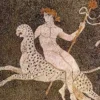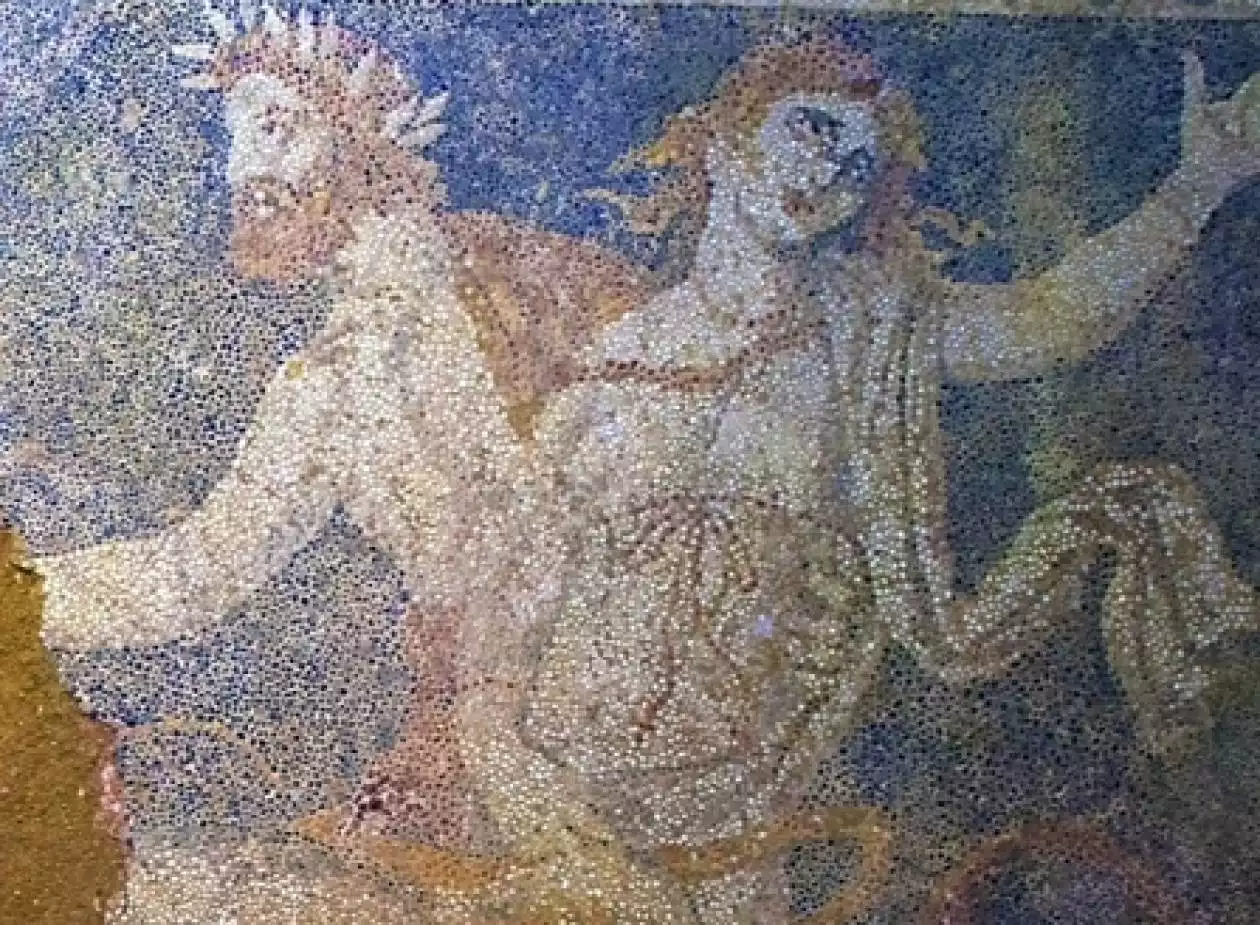
The introduction to the myth of Persephone is one of the most emblematic narratives of Greek mythology. Born as the daughter of Demeter, the goddess of agriculture and fertility, Persephone represented innocence and the flourishing of nature. However, her life dramatically transformed when she was abducted by Hades, the lord of the Underworld, an event that changed the course of the world and established the alternation of the seasons. The existential dimension of this myth extends far beyond simple storytelling, as it symbolizes the eternal dialectic between light and darkness, life and death. The abduction of Persephone and its consequences form a rich allegory for the human experience, the transition from innocence to maturity, and the eternal quest for balance between the contradictions of existence (Kampourakis).
The Young Maiden and the Fateful Encounter
Life Under the Protection of Demeter
Before her abduction, Persephone lived in a world full of light and innocence under the protective shelter of her mother. Demeter, the goddess of agriculture and fertility, had created a protected environment for her daughter, away from the gaze of other gods, especially males. The coexistence of mother and daughter epitomized a harmonious relationship, as the young goddess learned the secrets of nature and fertility. Persephone, initially known by the name Maiden, symbolized the blossoming youth and the eternal rebirth that characterizes the cycle of nature (Archaeological Bulletin).
Hades and the Divine Plan
The myth gains depth and complexity with the appearance of Hades on the scene. The lord of the Underworld, brother of Zeus and Poseidon, lived isolated in his dark realm, away from the other gods. His solitary existence drove him to seek a companion, and his choice fell on Persephone. The plan for her abduction was not arbitrary but had the approval of Zeus, who, knowing that Demeter would never consent to such a marriage, conspired in the kidnapping of the daughter. This plot highlights the patriarchal structures of ancient Greek religion, where female deities, despite their power, are subject to the decisions of male gods. Stephen Fry’s study reveals the complex power relations between Demeter and Hades and the other Olympians (Fry).
The Moment of Abduction in the Flower Meadow
The decisive moment of the myth takes place in a blooming meadow, where Persephone, surrounded by the Oceanid Nymphs, gathers flowers. The choice of landscape is not random, as it symbolizes innocence and the summer bloom that will soon be interrupted. According to various versions of the myth, Persephone was enchanted by an extraordinary flower, often referred to as a narcissus, which sprouted through the intervention of Gaia at Zeus’s command. The moment the maiden reaches out to pluck it, the earth opens, and Hades appears with his chariot, seizing her and dragging her into his realm. Her cries are lost in the air, heard only by Hecate and the Sun, while her companions cannot protect her. This violent transition from light to darkness serves as the fundamental metaphor of the myth for the transition from innocence to maturity, from youth to adulthood, from life to death and back to life, reflecting the mythical interpretation of the ancient Greeks regarding natural cycles and existential transitions.
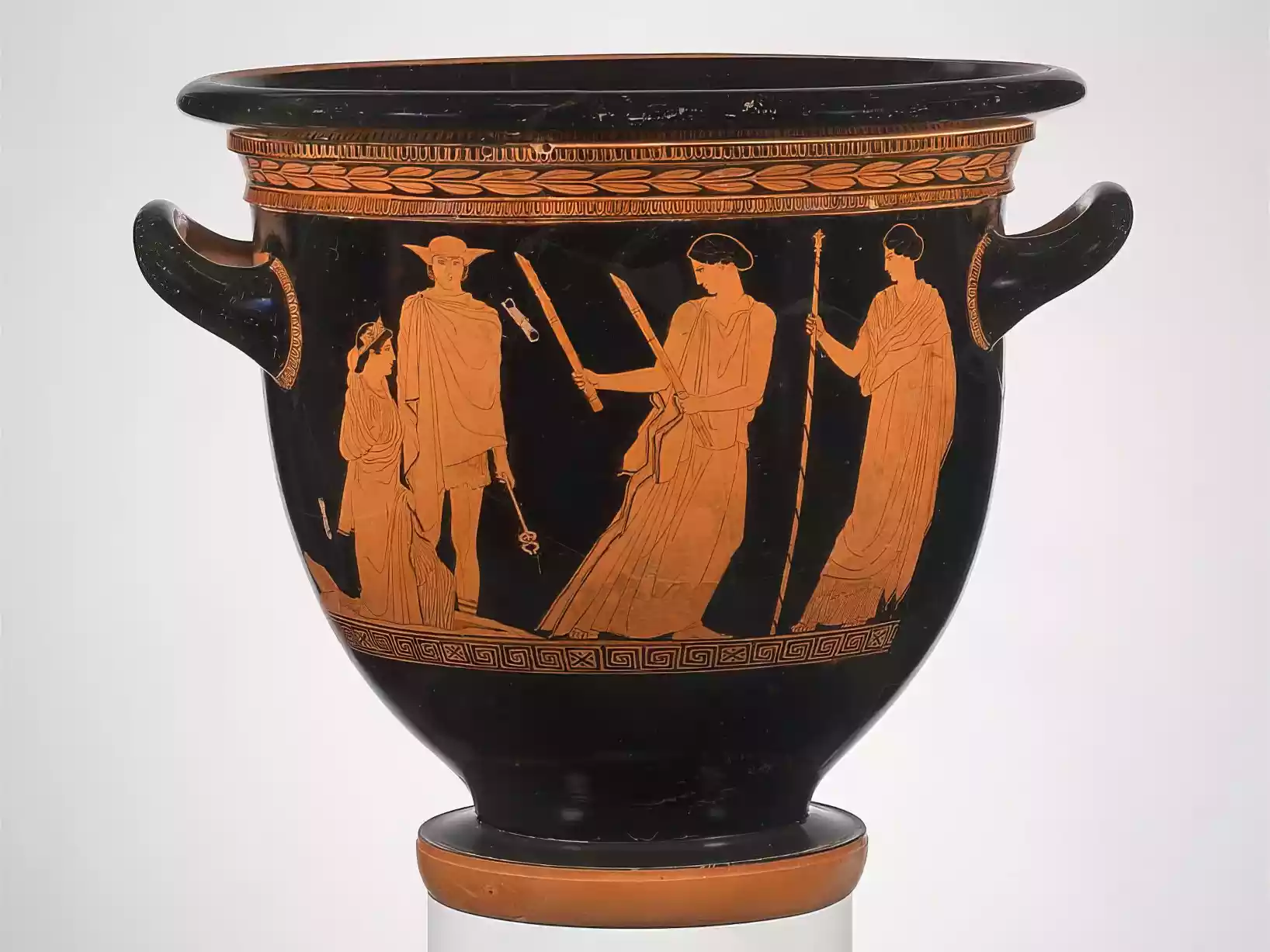
The Lament of Demeter and the Consequences for the World
The Search for the Lost Daughter
The abduction of Persephone triggered a chain of events with cosmic consequences. Her mother, Demeter, hearing her daughter’s cry fade away, immediately entered a state of profound mourning and rage. The search that followed was not limited to simple lamentation but evolved into a painful wandering that lasted nine days and nights. The goddess, holding lit torches, traversed the world searching for Persephone, asking gods and mortals, until the Sun, who sees everything from the sky, revealed to her the truth about the abduction of Persephone and Zeus’s involvement in the plan (Decharme).
The Goddess’s Wrath and the Sterility of the Earth
The revelation of the truth led Demeter into a state of rage and mourning so intense that it threatened the very existence of the world. Abandoning Olympus, she refused to fulfill her duties as the goddess of agriculture. The consequence of this withdrawal was catastrophic: the earth became barren, crops withered, and the threat of famine was imminent. This symbolic connection between the emotional state of the goddess and the fertility of the earth reflects a deep understanding of the ancient Greeks regarding the relationship between mental and physical harmony. Demeter’s alienation from the other gods was so profound that she disguised herself as an old woman and wandered among mortals.
The Episode in Eleusis and the Mysteries
During her wandering, Demeter arrived in Eleusis, where she was hosted by King Celeus and Queen Metaneira. There, she took care of the newborn prince Demophon, whom she tried to make immortal by placing him each night in the fire to burn away his mortal nature. When Metaneira discovered her, she interrupted the process, causing the revelation of the goddess’s true identity. In return for their hospitality, Demeter taught the Eleusinians her Mysteries, a tradition that would later evolve into the famous Eleusinian Mysteries, one of the most significant worship practices of the ancient Greek world with deep symbolic connections to the cycle of death and rebirth embodied by the myth of Persephone.
The Intervention of the Olympian Gods
The crisis caused by Demeter’s withdrawal ultimately forced Zeus to take action. Mortals, faced with the specter of hunger, stopped offering sacrifices to the gods, thus threatening the divine order. Zeus sent many messenger gods to persuade Demeter, but she remained unyielding: she demanded the return of her daughter. This strong stance of Demeter highlights a rare instance in Greek mythology where a female deity exerts such active resistance against the will of the patriarchal power system represented by Zeus.
Hermes in the Underworld and Hades’ Pomegranate
Recognizing the seriousness of the situation, Zeus finally sent Hermes to the Underworld to negotiate Persephone’s release. The myth introduces a critical complication here: before her departure, Hades offered Persephone a pomegranate, from which she ate a few seeds. This symbolic act had profound consequences, as according to the laws of the Underworld, anyone who tasted food there was bound to return. The symbolism of the pomegranate is multi-layered: it suggests fertility, marriage, but also the irrevocable bond with the Underworld. The consumption of the seeds marks Persephone’s transition from innocence to female maturity and her dual existence as the wife of Hades and daughter of Demeter. The modern interpretation of the myth, as developed in international literature, particularly highlights this dual nature of the goddess who shares her existence between two worlds (Leavitt).
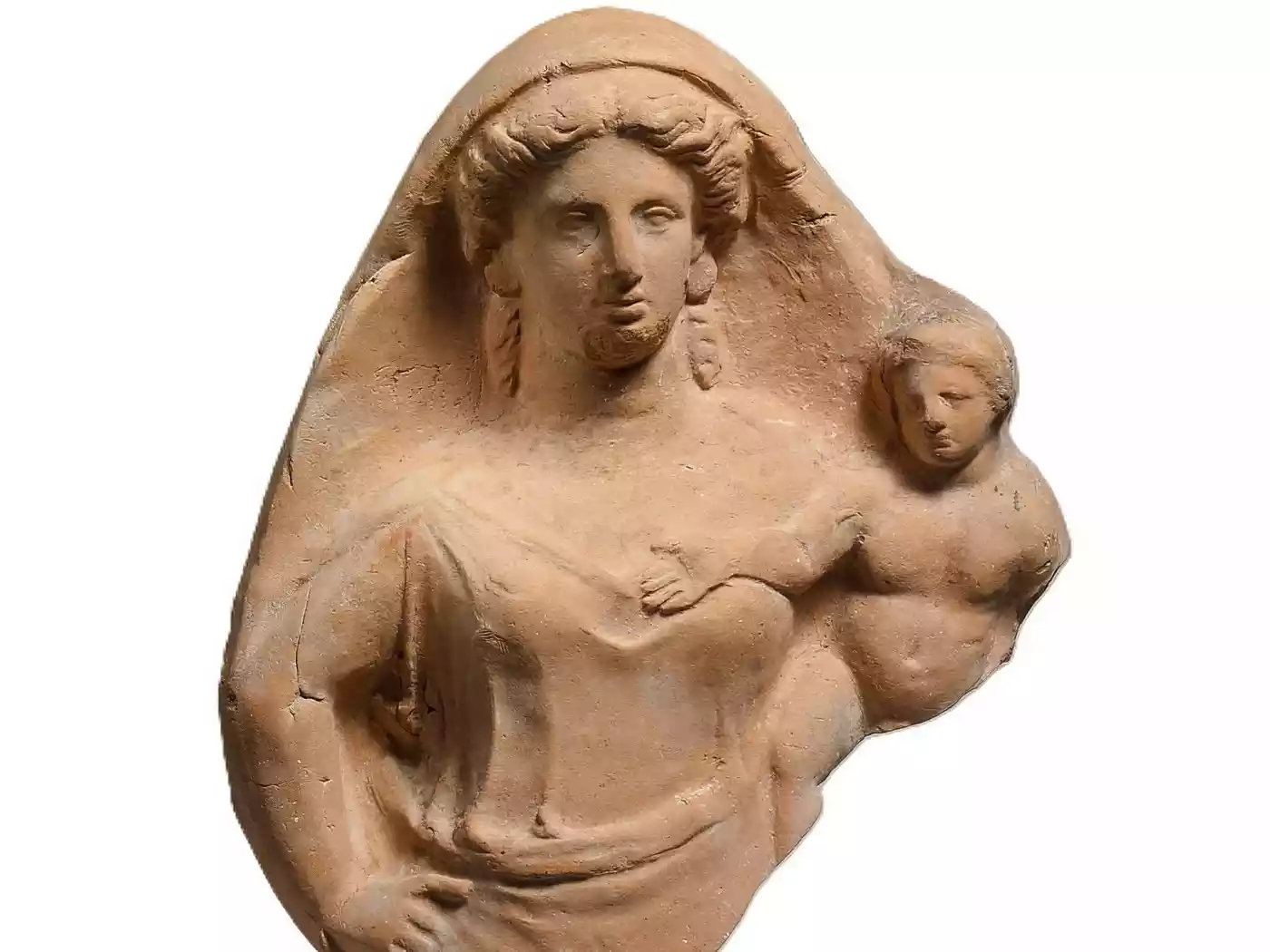
The Cycle of Seasons and the Dual Existence
The Agreement of Zeus and the Division of Time
The conclusion of this cosmic dispute took place through a mediation by Zeus that marked a milestone for cosmic order. The complex negotiation resulted in a compromise of high symbolism: Persephone would divide her time between the two worlds. For every seed of pomegranate she had tasted in the Underworld, she would spend one month there each year. According to the prevailing version, she consumed six seeds, thus determining her six-month stay in Hades’ realm. This arrangement serves as a fundamental etiological myth that explains the alternation of the seasons: when Persephone is in the Underworld, Demeter mourns, and the earth sinks into autumn and winter, while her return signifies spring and summer.
Queen of the Underworld: The Dark Side of Persephone
Persephone’s transformation from innocent maiden to queen of the Underworld constitutes one of the most interesting developments of her character. As the wife of Hades, she gains a power and authority that makes her one of the most formidable chthonic deities. Her depiction in art and literature often reflects this dual nature: the sweetness of Demeter’s daughter and the severity of the queen of the dead. The modern malice interpretation of the myth by Scarlett St. Clair offers an interesting analysis of this transformation (St. Clair).
The Return to Light and the Symbolism of Spring
Persephone’s ascent from the Underworld represents the climax of the narrative cycle and has profound symbolic significance. The reunion of mother and daughter represents the rebirth of nature and the return of life. Demeter’s joy is expressed through the renewal of the earth’s fertility, the blooming of plants, and the abundance of fruits. This cyclical journey of death and rebirth embodies the deep understanding of the ancient Greeks regarding natural cycles and the eternal renewal of life. The annual arrival of spring was for the ancient Greeks the most tangible proof of Persephone’s return to the upper world.
The Thesmophoria and the Cult of the Twin Demeter-Persephone
The dual existence of Persephone as the daughter of Demeter and queen of the Underworld is also reflected in the worship practices that developed around these deities. The Thesmophoria held particular significance, an exclusively female festival in honor of Demeter and Persephone, directly related to the fertility of the earth and agriculture. The frequent joint worship of the two deities underscores the inseparability of their relationship despite their separation. They were often simply referred to as “the Two Goddesses,” highlighting their complementary nature and interdependence.
Orphism and the Secret Teachings of the Myth
Within the context of Orphism, a mystical religious trend of ancient Greece, the myth of Persephone acquired additional dimensions. The Orphics placed particular emphasis on the chthonic aspects of worship and the afterlife, seeing in Persephone a soteriological figure who could mediate between the worlds of the living and the dead. Her descent into the Underworld and her return served as an allegory for the journey of the soul, while her dual nature symbolized the possibility of transformation and transcendence of death.
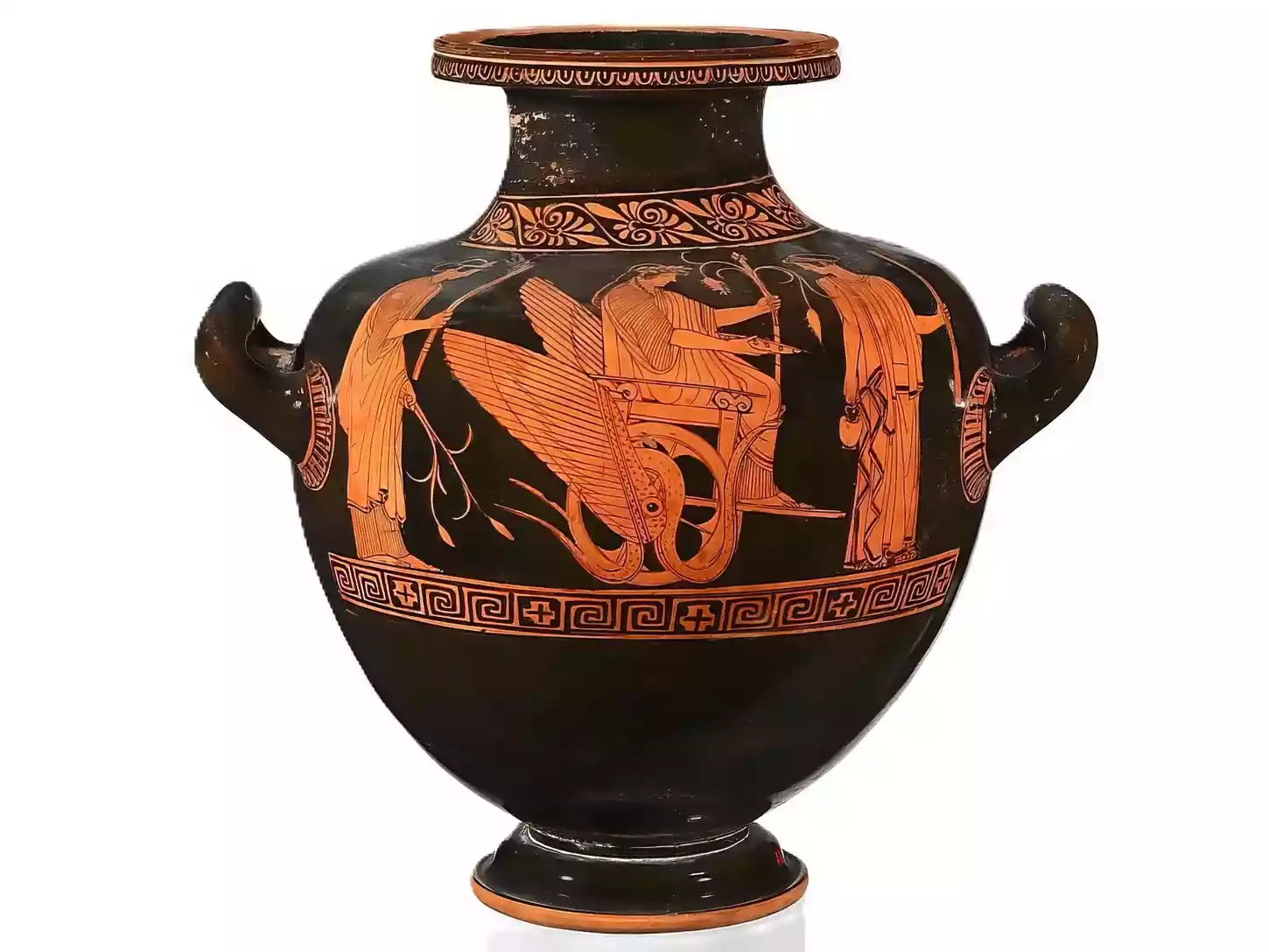 Attic red-figure hydria (460-450 BC) attributed to the Niobid Painter. It depicts the myth of Persephone and Demeter as they send Triptolemus in his winged chariot to teach the cultivation of grains.[/caption>
Attic red-figure hydria (460-450 BC) attributed to the Niobid Painter. It depicts the myth of Persephone and Demeter as they send Triptolemus in his winged chariot to teach the cultivation of grains.[/caption>
Epilogue
The myth of Persephone remains one of the most multi-layered and rich in symbolism narratives of Greek mythology. Her abduction by Hades, Demeter’s lament, and the final arrangement of cyclical time constitute a multifaceted allegory for deeper existential and natural processes. Beyond just explaining the alternation of the seasons, the myth explores fundamental issues of human experience: the loss of innocence, the transition to maturity, the inevitable coexistence of light and darkness, and the eternal renewal of life through cycles of death and rebirth. Timelessly, the story of Persephone continues to inspire us, serving as a valuable mirror for understanding the complexity of human existence and the cosmic cycles that govern life.
Frequently Asked Questions
What is the deeper meaning of Persephone’s abduction in Greek mythology?
The abduction of Persephone serves as a multi-layered allegory that transcends simple storytelling. It expresses the transition from innocence to maturity, symbolizes death and the rebirth of nature, and reflects the cycles of human experience. At the same time, it represents a depiction of the patriarchal structures of ancient society, where women often had no say in their futures, but also a story of empowerment, as Persephone ultimately gains her own power.
Why is the mythological narrative of Persephone connected to the seasons of the year?
The connection of the myth with the seasons reflects the ancient Greeks’ attempt to interpret natural phenomena. Persephone’s absence from her mother causes Demeter’s sorrow, resulting in the winter sterility of the earth. Conversely, her return signifies spring and rebirth. This cycle explains the decay and rejuvenation of nature in a way that made the inexplicable understandable to the ancients.
How did Persephone’s personality evolve after her abduction by Hades?
Persephone’s personality undergoes a remarkable transformation. From the innocent maiden who gathered flowers, she evolves into a powerful and complex deity with a dual existence. As queen of the Underworld, she gains authority and seriousness while maintaining her sensitivity. This transition symbolizes maturation and the multiple identities that people develop as they face different circumstances in their lives.
What were the most significant worship events in honor of Persephone in ancient Greece?
The worship events for Persephone primarily included the Eleusinian Mysteries and the Thesmophoria. The former were secret rituals associated with the cycle of death and rebirth, promising a better afterlife for the initiates. The Thesmophoria, an exclusively female festival, honored Demeter and Persephone, focusing on the fertility of both the earth and women.
How is the transition from innocence to maturity symbolized in the myth of Persephone’s abduction?
The abduction of Persephone represents a violent yet inevitable transition from childhood innocence to adulthood. The blooming meadow where she gathers flowers symbolizes the protected childhood, while the descent into the Underworld represents exposure to the dark sides of life. The consumption of the pomegranate suggests the acceptance of new responsibilities and roles. Ultimately, her dual nature reflects the complexity of adult identity.
What elements of the myth of Persephone influenced later religious and philosophical concepts?
The myth of Persephone significantly influenced later perceptions of afterlife and the cyclicality of existence. Particularly in Orphism, her descent and ascent served as a model for the afterlife journey of the soul. At the same time, the idea of transformation through pain and the perception of dual nature influenced philosophical views on the coexistence of opposites and the acceptance of the duality of existence.
Bibliography
- Kampourakis, D. A Drop of Mythology. 2024. Kampourakis.
- Archaeological Bulletin, vol. 36, part 1, 1989, p. 110. Archaeological Bulletin.
- Decharme, P. Mythology of Ancient Greece. 2015, p. 369. Decharme.
- Fry, S. Heroes. 2023. Fry.
- Leavitt, A. J. Persephone: Greek Goddess of the Underworld. 2019. Leavitt.
- St. Clair, S., Bligh, R. S. Hades and Persephone – Volume 03: A Touch of Malice. 2022. St. Clair.
- Burn, L. Greek Myths. 1992, p. 8. Burn.

